A day in the life of a fighting cock in Karachi.
I’ve seen a lot of bizarre things in Karachi: motorcyclists honking at cows to scare them into racing; pets walking the runway in a “fashion show”; the time I sat in the backseat of a Mafioso car watching a raunchy Bollywood music video playing on a TV mounted to the front seat. It’s a strange city, one that feels perpetually driven by a cunning plan drawn up in a smoky basement; in 2013, for example, con artists built a fake bank branch to rob people. That’s the kind of city this is.
But on a Sunday morning, as I watch a cockfight on the front lawn of a friend’s house, I’m convinced that this may be my most surreal Karachi experience yet.
This may be a strange day for me—how, for example, does one Instagram a cockfight? But for Galwa, the two-year old rooster in the arena, this day determines his future. Galwa is making the transition from being a pampered pet to a cockfight contestant.
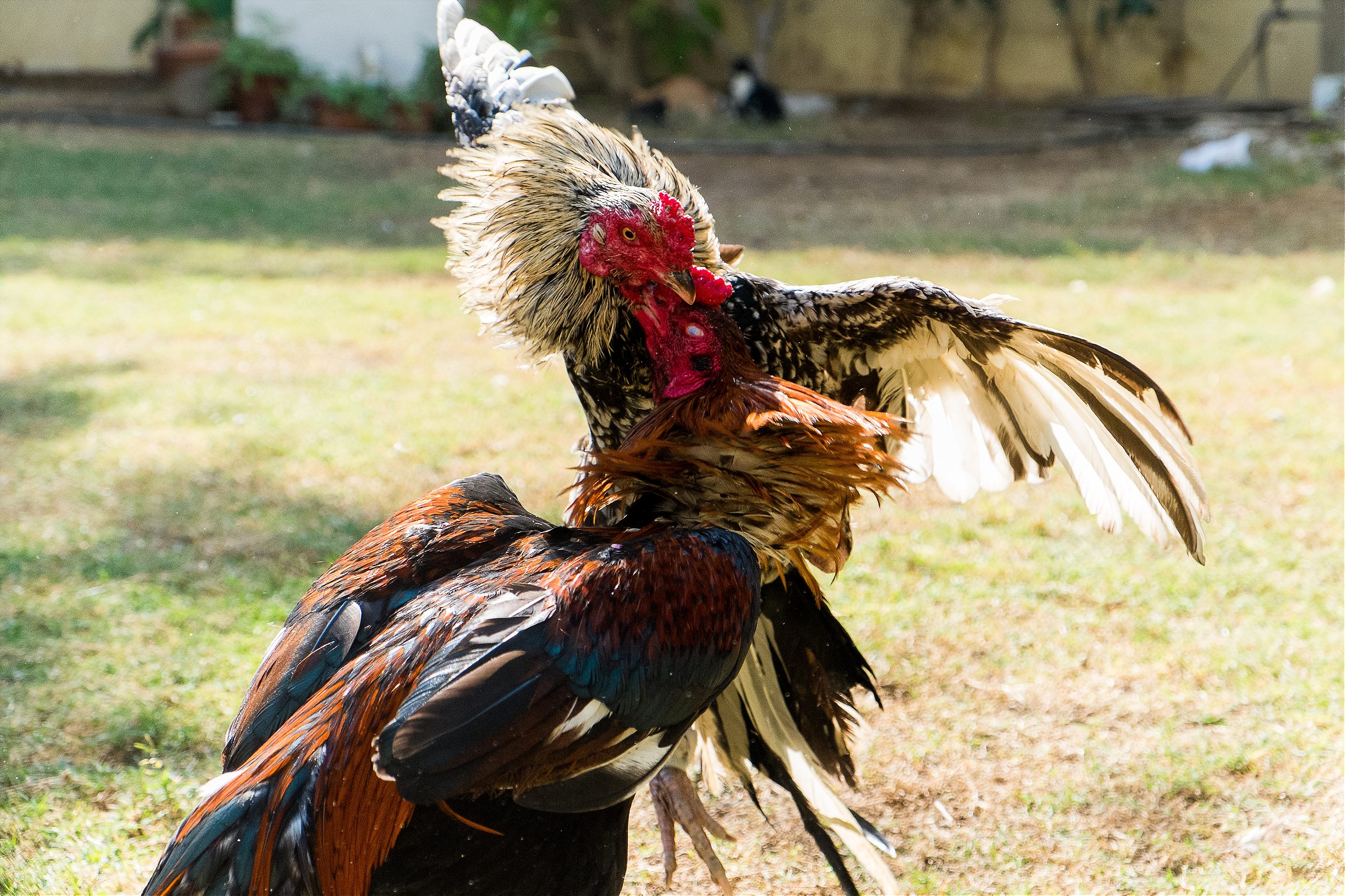
Shahabuddin, Galwa’s affable, heavyset trainer, has raised and trained roosters for around eight years. He’s given them a variety of odd names, including Saavan (translation: the monsoon season) and Klashn (after the Kalashnikov gun.) He works as a cook in Karachi and claims he is 29, even though he appears to be in his mid-30s.
On this Sunday, he is prepping Galwa for a “test fight”—a fight with another cock to assess Galwa’s stamina levels, or if he can even fight at all. “Everything will be revealed today,” he says. If Galwa doesn’t match the rooster claw for claw, he will be “wasted,” as Shahabuddin puts it. The whole thing feels ominous. I’m not sure if I can imagine Galwa as potential dinner now.
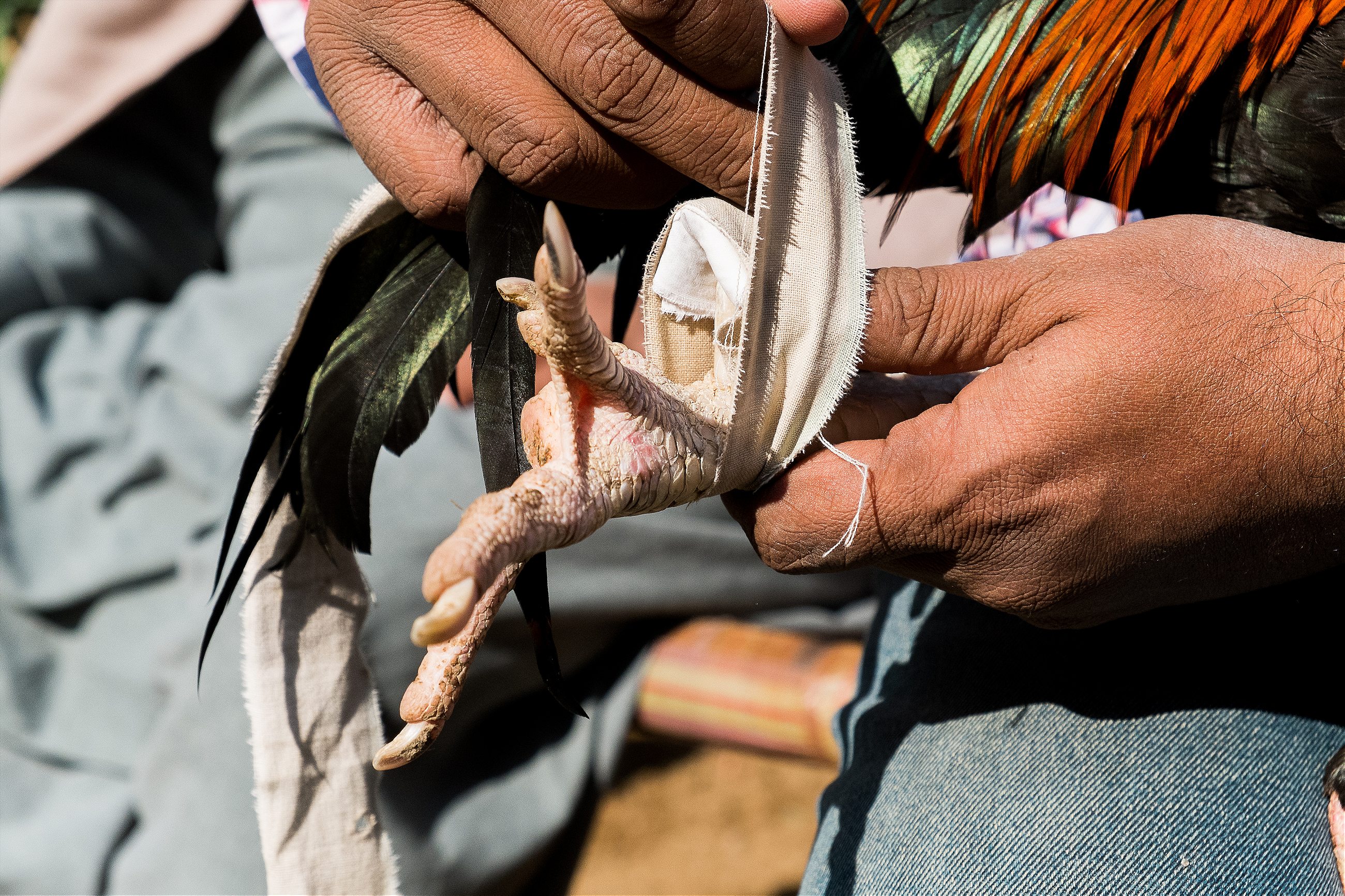
9:45 A.M.
Shahabuddin lets Galwa out of his coop and gives him his breakfast of bird feed. The burly trainer sits outside the kitchen door with Galwa, holding him in a somewhat loose grip. The house cats are playing around Galwa, but the rooster is used to their meows and endless games of hide-and-seek. The cats seem unfazed by the rooster as well. It’s a strange urban coexistence, perhaps one that adds to the bizarre reality of life in Karachi.
Shahabuddin starts prepping Galwa, kicking off the proceedings with a massage of mustard seed oil. The idea behind the oil massage is to moisten the rooster’s beak, so he can easily peck at his rival in the practice match today. The oil massage also helps ensure Galwa’s spurs don’t become brittle and break.

Shahabuddin massages the oil into Galwa’s feathers in downward motions as the bird makes slightly rumbling noises. The rooster’s red and green feathers begin to glisten in the morning sun. Galwa weighs about two, maybe two-and-a-half kilos. Shahabuddin lifts him up to show me that he’s light—but not too light. Roosters can’t be over or under their target weight, and are fed a specific diet when they’re training versus their regular routine. Most fights take place in the winter, and during the season roosters dine on pistachios and almonds, egg yolk, and silver foil, which is traditionally put on sweetmeats. During the summer, they feed on soaked bread and their usual fare of birdseed.
Shahabuddin wipes Galwa down. “It’s like how we get up in the morning and wash up.” We move to the garden where the fight will take place. Shahabuddin sits with Galwa in a grassy, sun-soaked patch so the rooster can warm up.
He would have to pay the bird’s train fare
We wait for Shahabuddin’s acquaintances to show up. The men are bringing along their roosters so Galwa can match his wits—and beak—against them. Shahabuddin seems confident, but there is an edge of uncertainty to the proceedings. Anything can happen. His beloved pet could injure its neck or its beak, or lose an eye.
“Today’s fight is a brotherly fight,” he says. “When the rooster is trained and our heart is satisfied with his progress, then we will take him into the [fighting] ground.”
“God will do what’s best,” he concludes.
Shahabuddin cleans Galwa’s throat with a special custom-made brush. This is to make sure there’s no phlegm in the rooster’s throat, and is part of Galwa’s grooming routine.

A goat brays in the distance, as if it’s being slaughtered. Galwa doesn’t flinch. He is used to animals—he’s seen animals up close, but not in Karachi. Shahabuddin once took Galwa back to his home village in southern Punjab. The two traveled by bus—on a train, Shahabuddin would have to pay for the bird’s fare—with Galwa in a basket throughout the eight-hour journey. Galwa saw his fair share of animals in the village: goats, cows, bulls.
11:00 A.M.
The roosters and their owners arrive. One of the men assesses roosters for fights. Shahabuddin is proudly holding onto Galwa, casting glances at their competition. It’s getting warmer now. Cockfights are mostly organized in the winter, because roosters tire easily in the summer.
Pleasantries are exchanged. Roosters are shown off. The men sit down on charpoys and chairs.
The first fight is with a year-and-a-half old rooster named Lakha Lal. The birds peck at each other. Galwa is aggressive, fluttering his feathers, pecking away at Lakha Lal. Sometimes the two birds rise mid-air, as if synchronized. The men shout encouragement. One calls out that the fight has been going on for five minutes, which is the standard time for a round of cockfighting.
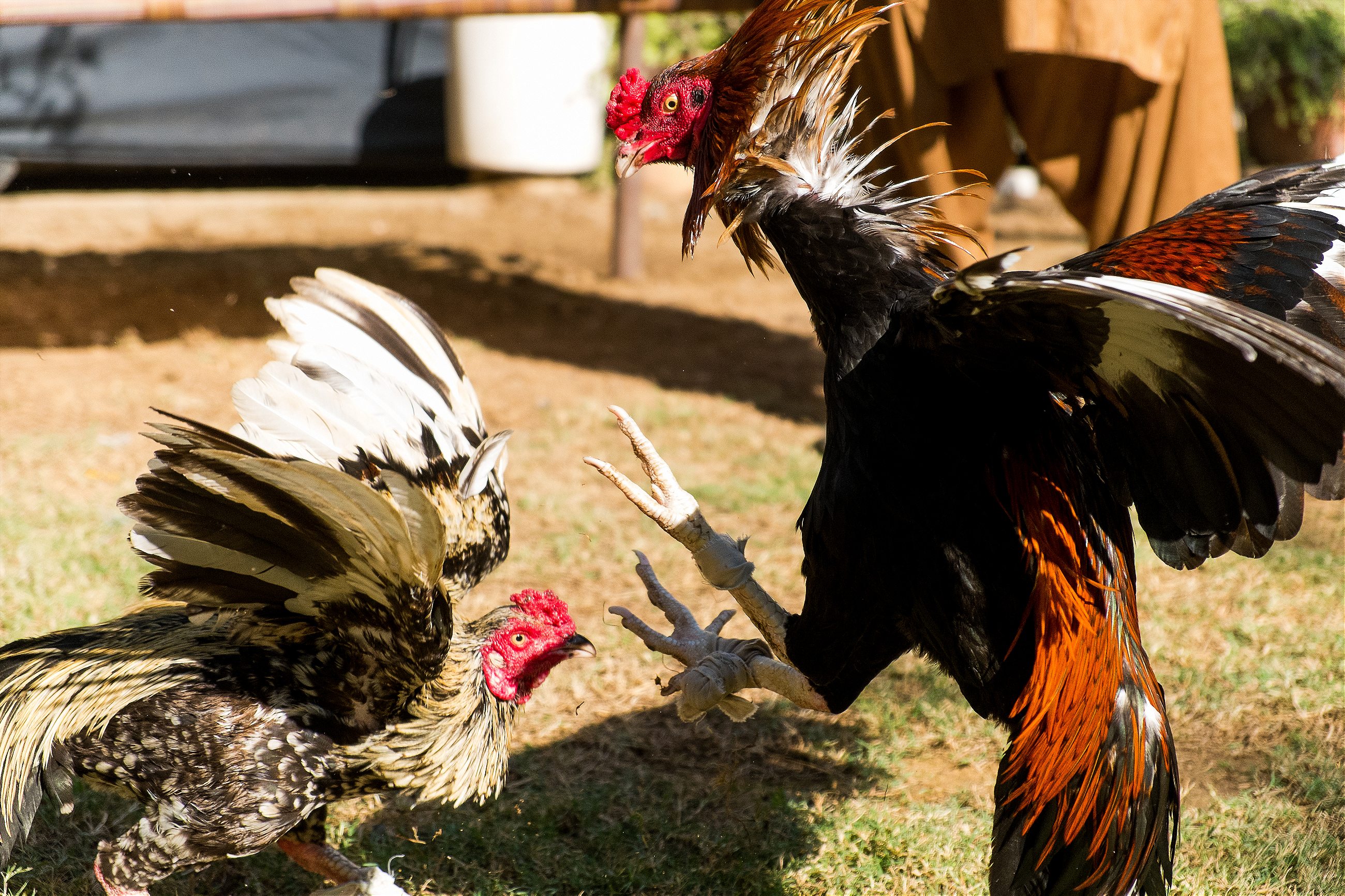
The second encounter, with a smaller rooster called Jara, goes well too. There is a lot of pecking and ruffled feathers and the fights end before there is any damage to either bird. In the arena though, the games can be bloody if the bird owners don’t play by the rules. Some are known to tape extra nails—from other roosters or even sharpened bits of a deer’s antlers—to a rooster’s feet to ensure he defeats his victim in one strike.
The men get up and separate the roosters. Shahabuddin is quietly ecstatic. “He fought very well!”
Shahabuddin helps cool Galwa down. He sips water and sprays mist onto Galwa’s body directly from his mouth. He holds the bird up and presses his own face to its side so it can relax and calm down from his maiden fight. The other men are doing the same to their birds, holding them, stroking them, preening over them. Jara lets out a full-throated crow. Cockfighting is a vicious sport and it can’t be condoned. But this scene of love—for birds that could be hacked to pieces—is adding to the surreal day. What makes this more surprising is that roosters aren’t loyal animals. Shahabuddin has a scar from where it pecked him, and he knows Galwa doesn’t care about the man who stays up with him day and night.
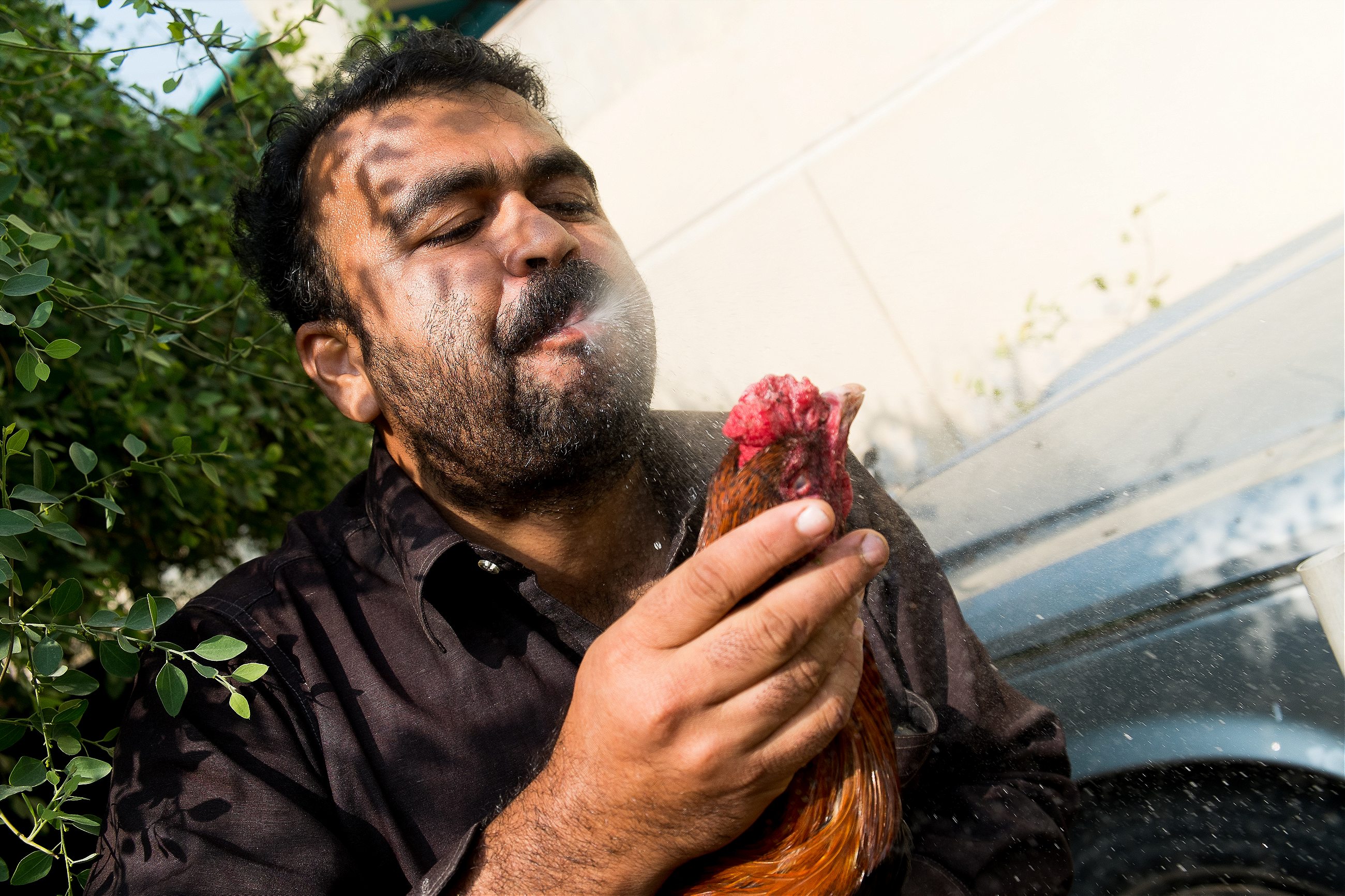
The other attendees are approving of Galwa too, though one man points out that Galwa tired a bit. Shahabuddin gets defensive, as if it’s a personal slur. He retorts that Galwa had been sick and he has been tending the bird, and has “helped it get back on its feet.” But the verdict is unanimous: Galwa can hold his own in a competition.
EVENING
Shahabuddin doesn’t spend the entire day with Galwa, but the evenings are marked for training the bird. “It has some running to do in the evening. I make it run,” Shahabuddin says, describing the “exercise regimen” that starts around 4 p.m. After the training, it’s back to the coop for Galwa. The rooster’s bed comprises a soft pillow and a large sack, which he is encased in during the night.
9 P.M.
Shahabuddin takes Galwa out of the coop. In the winter, Galwa gets a warm compress for thirty minutes. Shahabuddin warms a pan on a stove, heats up a compress and presses it to Galwa’s chest. Sometimes Shahabuddin uses his own hands to warm the bird.
Dinner follows, and then Galwa goes back to the coop.
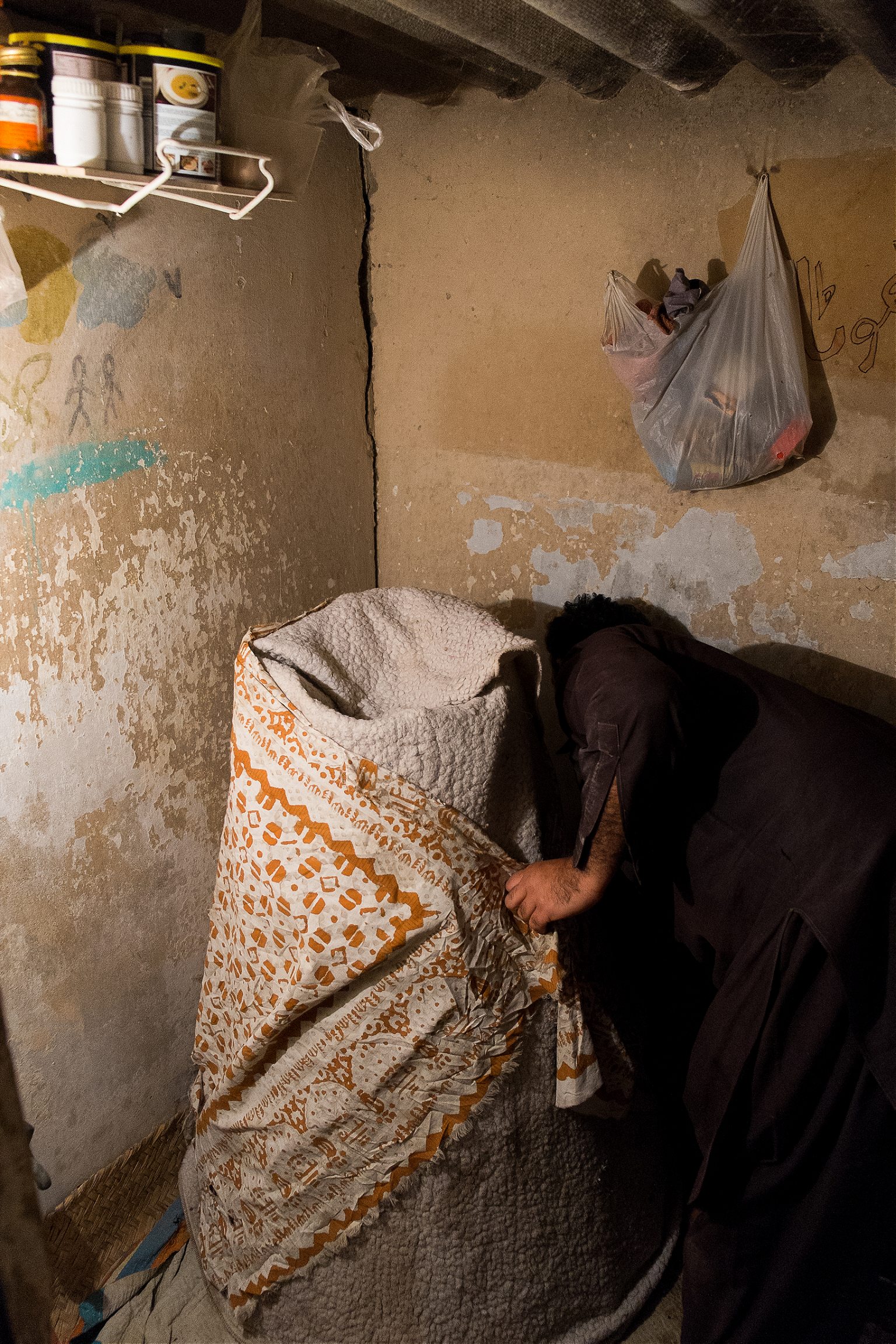
It seems like an all-consuming job, and Shahabuddin has gone to great lengths to train roosters. Even when he worked in houses where he wasn’t allowed to keep pets outside, he would rig up a cage in his room for the bird. Shahabuddin’s wife is used to her husband devoting so much time to the rooster. He describes himself as an animal aficionado: He can also judge and size up different breeds of goats and cows, not just take care of them.
It still seems odd to train and fight roosters in the city, where one could do anything else. Betting on cockfights is illegal in Pakistan, though Shahabuddin posits that the organizers probably have some understanding with the police to hold them. Betting can go up to $3,000, though a low-level fight can net about $150. There is still wariness that the police can raid cockfight venues, even though the world of cockfighting is fairly low-key. Enthusiasts learn about upcoming fights through their own networks, as they’re not advertised openly. Shahabuddin, however, is driven by the crowing birds.
“I’ve never had paan,” Shahabuddin says, referring to the addictive betel leaf and nut combination that is consumed in the thousands in Karachi. “I’ve never had a cigarette. This is my only passion.”